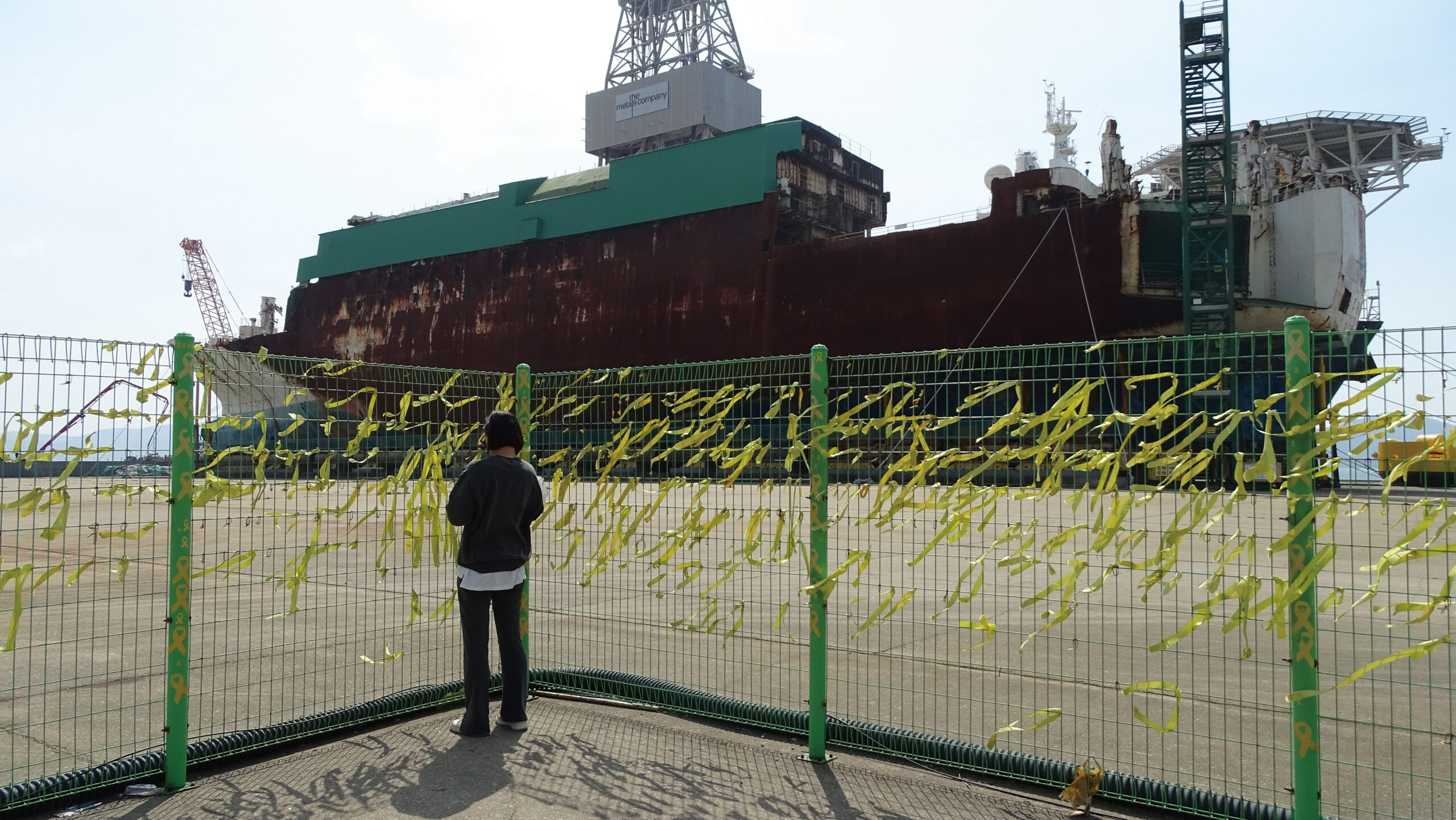“Do Not Move. Just Stay Where You Are.” Revisiting the Sewol Ferry Ten Years On
By Isaiah Winters
No decade ever emerges unscathed from the wreckage of human error. The Sewol Ferry’s tragic sinking, President Park’s ignominious ouster, and Itaewon’s horrid crowd crush are three marrow-deep gouges in the national timeline from just the last ten years. They’re the sort of events you can link your exact whereabouts to when you first heard of them. As a reverent reminder of its tenth anniversary, this month’s “Lost” column will briefly return to the Sewol Ferry disaster of April 16, 2014, with a visit to the ship’s remains in 2024.
Dry-docked on reclaimed land at Mokpo Newport (목포신항만), the rusted hull of the Sewol Ferry towers over its tiny trickle of daily visitors. Few seem to know it’s even there despite it being clearly visible from both Mokpo Bridge and the soaring tourism infrastructure on nearby Goha-do. Nevertheless, the memorial site is wide open to visitors year-round from 1–5 p.m., costs nothing to enter, and only requires some official form of ID, which you’ll temporarily exchange for a lanyard. So long as you have a car, it’s easily accessible from the main thoroughfare connecting Mokpo to Jindo, so visiting is worthwhile if you’re in the area.
Worthy as it is, flanking the memorial site are massive docks thrumming with ceaseless economic activity that might make you feel out of place. On my most recent visit in early April, a massive container ship to the right was disgorging hundreds of brand-new vehicles in breakneck processions of five-car rallies screeching out of the ship as fast as possible. In their haste, one of the drivers almost lost control around a curve when trying to keep up with the others. Even in the Sewol Ferry’s shadow, it seems corners are still there to be cut.
Observe the ferry long enough and you’ll notice it just isn’t shaped right. It’s too tall and top heavy for its base, a testament to the incautious modifications that heightened its center of gravity and compromised its stability. Zoom in further with a long-lens camera and the ferry’s uppermost decks resemble a jumble of shipping containers welded together all helter-skelter. One can only wonder how these additions made just a year prior to the accident passed inspection. Today a new wall of green paneling covers the upper portside of the ferry for reasons unknown to me; I can’t help but liken the paneling’s shape to the Soviets’ “sarcophagus” structure welded over Chernobyl’s ill-fated Reactor 4.
Not unlike a steel sarcophagus, the Sewol Ferry would rapidly entomb 304 of its passengers, 250 of whom were high school kids, and five of whom were never found. But even more confining than the ferry’s formidable steel hull was a simple announcement to passengers over the intercom: “Do not move. Just stay where you are. It is dangerous if you move, so just stay where you are.” This message was repeated again and again, even as the crew selfishly made for the exits. They were among the first to be rescued, including Captain Lee Joon-seok, who stepped off the ferry barefoot and in his underwear, exposing himself to the world as an incompetent coward. He’s since been fitted with a lifetime supply of khaki prison uniforms, which I think is a much better look for him.
Captain Lee, “Do not move. Just stay where you are.”
The Author
Born and raised in Chino, California, Isaiah Winters is a pixel-stained wretch who loves writing about Gwangju and Honam, warts and all. He’s grateful to have written for the Gwangju News for over six years. More of his unique finds can be seen on Instagram @d.p.r.kwangju and YouTube at Lost in Honam.





